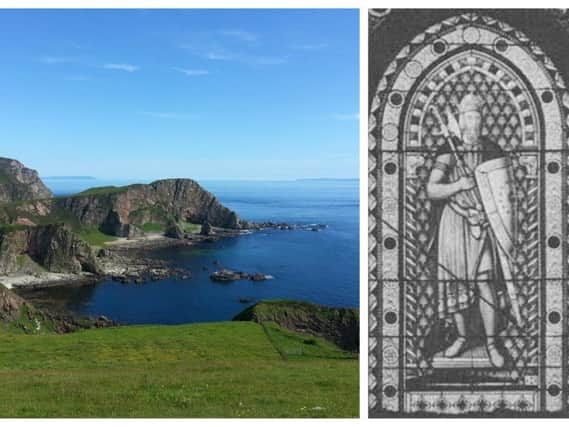On this day 1156: Slaughter in the sea as the Vikings battle for the Hebrides


In a fierce storm on January 5 or 6 1156, naval forces led by Godred the Black, the unpopular Norse King of Man and Isles,clashed with the seafaring might of Somerled, the Thane of Argyll, in waters off the south coast of Islay in what has become known as the Battle of Epiphany.
The showdown was planned to remove Godred from power and increase Somerled's influence throughout the islands.
Advertisement
Hide AdAdvertisement
Hide AdIt is said that Somerled, who had mixed Norse and Gaelic Heritage and already had some control over the Inner Hebrides as a key figure in the Manx court, built 80 birlinn war ships for the battle.
"The battle took place at night in the dead of winter. How they managed to manoeuvre under oars - no sails were used during battle - in darkness in wild winter seas without most of their ships colliding or foundering was a miracle," said Kathleen MacPhee in Somerled, Hammer of the Norse.
"It must have been a titanic struggle and the Chronicles of Man describes the terrible slaughter which ensued," she added.
By dawn, however, both sides were exhausted with no clear winner declared in those wintry seas.
Peace was instead called and the islands were further carved up between the two warlords.
Somerled gained the islands of Argyll, including Mull and Islay while the Vikings kept the rest, including the Western Isles and Skye.
He declared himself King of the Isles with the Viking hold on the islands now weakened.
Although Somerled held the islands from the Norwegian Crown, he operated as a free prince and pledged his loyalty to the Scottish King.
Advertisement
Hide AdAdvertisement
Hide AdHe died at the Battle of Bargarran in 1164 as he attempted to challenge the ever ambitious Stewarts, who supported the Scottish Crown, in their Renfrew homeland.
With Somerled dead, the Vikings seized the moment and took back control of some of the islands.
According to accounts, Somerleds's descendants, were granted the Argyll islands and went on to form the hugely powerful Lordship of the Isles dynasty.
